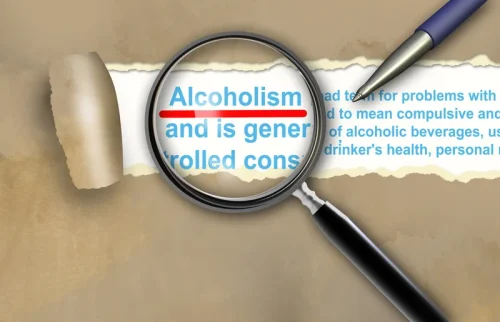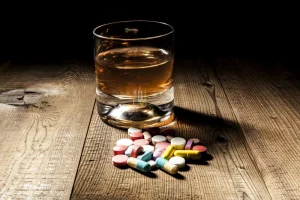
Both groups showed similar, large reductions in cocaine use during the trial. Post hoc exploratory analyses within the CBT plus modafinil group showed significantly larger baseline to week 12 reductions in cocaine use days in subjects who took modafinil for more than 8 weeks (48). Both CBT and standard drug treatment require a great deal of infrastructure support for treatment providers, and transportation to the treatment site may also be difficult for some patients.
Find Evidence-Based Practices
These approaches recognize that addiction doesn’t happen in a vacuum – it affects and is affected by relationships. Family therapy can help heal damaged relationships and create a supportive home environment, while support groups like Narcotics Anonymous provide ongoing peer support. It’s like building a network of understanding and encouragement that extends far beyond the treatment setting.
SAMHSA celebrates National Recovery Month
47 and close gaps in the law that are only making it harder for us to meet the moment. That’s why many local officials who see this crisis every day are uniting in support of Prop. We see the need for more treatment and accountability tools that can break the cycle of addiction that creates even bigger problems down the line. Indeed, as more and more Californians struggle with untreated addictions, https://ecosoberhouse.com/ the number of homeless individuals in our state has surged 60%, even though it is falling in most other states. Individuals who experience a relapse of cocaine use are likely to experience several warning signs long before returning to substance use. Research has demonstrated that MOUD is effective in helping people recover from their OUD.567 It is important to find what works best each individual.

How Is Cocaine Addiction Treated?
The EMPOWER program started recruitment in February 2024 and will last 6 months, after which regular REACH services will continue. Preliminary findings indicate that EMPOWER can increase treatment retention at 3 months compared with the normal REACH program; additional data will be gathered in the coming months. Psychosocial and behavioral therapies, including cognitive behavioral therapy (CBT) and contingency management (CM) interventions, cocaine addiction treatment are the primary treatments for cocaine use disorder. However, they are time-consuming, not universally accessible, and suffer from low treatment retention. Currently, there are no Food and Drug Administration (FDA)-approved medications to treat cocaine use disorder. One challenge in establishing the evidence base for pharmacotherapy of cocaine use disorder is the sheer number of drug classes that have been studied.
- Patients assigned to CM had higher rates of treatment retention and lower rates of stimulant use compared with the CBT and combined-treatment groups during the treatment period (11).
- There are many theories as to why such high rates of co-occurrence exist between substance use disorders and other mental health disorders.
- Treatment begins with detox, which involves a period of abstinence from cocaine, stimulants, and other addictive substances.5,6 After detox, you will likely enter a professional inpatient or outpatient rehabilitative treatment program.
- We directly report the findings from previous SRs as well as their assessments of study quality.
- In that trial, topiramate-treated subjects had significantly more cocaine nonuse days than placebo-treated subjects during weeks 6 to 12 of the trial.
Bupropion, psychostimulants, and topiramate may improve abstinence, and antipsychotics may improve retention. Contingency management and behavioral interventions along with pharmacotherapy should continue to be explored. Left untreated, cocaine addiction can be devastating to a person’s health and wellbeing. However, with proper treatment, people can recover from even severe substance use disorders and cocaine addiction. Despite most of the studies evaluate craving as a secondary outcome and having a low number of studies per medication in most of the cases, clonidine, fenfluramine and m-CPP showed to be promising medications for cocaine craving in the short-term treatment. In addition, amphetamine, biperiden, carbamazepine, levodopa, lisdexamfetamine, lorcaserin, guanfacine, methamphetamine, mirtazapine, pioglitazone, progesterone, nefazodone exhibited anti-craving effects in long-term treatment.
- Detoxification alone without subsequent treatment generally leads to resumption of drug use.
- This page is designed as an overview for understanding cocaine misuse, addiction, and how it can be treated effectively.
- Nonetheless, ongoing barriers remain including implementation barriers such as stigma towards these practices, pragmatic limitations (eg, cost, staff availability), and model adherence.
- The earliest, 12-week clinical trial (28) involved 128 patients with DSM-IV cocaine dependence who were randomly assigned to placebo, low-dose dextroamphetamine (30 mg daily), or high-dose dextroamphetamine (60 mg daily).
& Behavioral Health Crisis Coordinating Office (BHCCO)
Our review complements and extends the findings of prior SRs by examining and summarizing data across all drug classes. We defined abstinence as 2 or more weeks of negative UDS—which meant excluding studies using other measures of abstinence. We summarized retention as an outcome, recognizing that improving retention in treatment increases the chances for successful recovery of stimulant use disorders; therefore, we did not consider study retention in our SOE assessment. It is also possible that the lack of significant findings was due to insufficient power to detect differences. As a result, in the presence of cocaine, these antibodies bind to cocaine, preventing it from reaching the brain and therefore blocking its euphoric and reinforcing effects.

National Mental Health and Substance Use Policy Laboratory (NMHSUPL)

It may be efficacious for CUD either by increasing dopamine transmission or by ameliorating the glutamate depletion seen in chronic cocaine users (35). However, lower-cost variants of VBRT using intermittent reinforcement, such as the “fishbowl” technique, have been shown to be effective (16). In the fishbowl technique, patients are rewarded for achieving abstinence by being allowed to draw from a fishbowl in which they are likely to not only achieve a smaller reward but also have a chance at receiving a much larger reward. Dopamine levels in the brain are increased by cocaine use, which can cause intense feelings of pleasure, or euphoria. This makes cocaine highly desirable among users, reinforcing repeated use of the drug.
Cocaine Withdrawal: Symptoms, Timeline, and Treatment
- It is a priority for CBC to create products that are accessible to all in Canada including people with visual, hearing, motor and cognitive challenges.
- Medicine treatment options for opioid addiction may include buprenorphine, methadone, naltrexone, and a combination of buprenorphine and naloxone.
